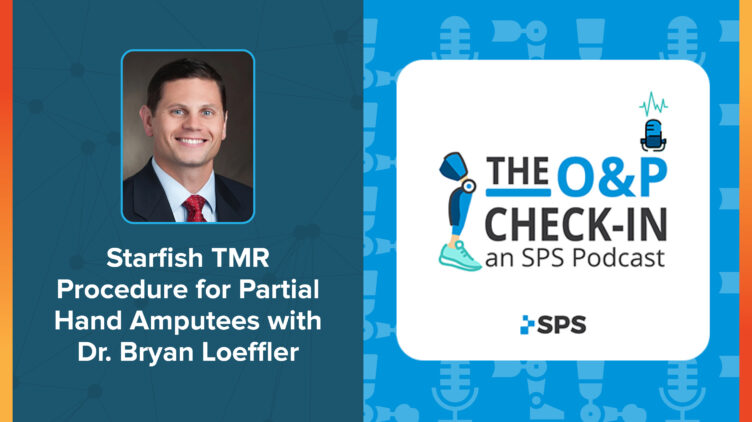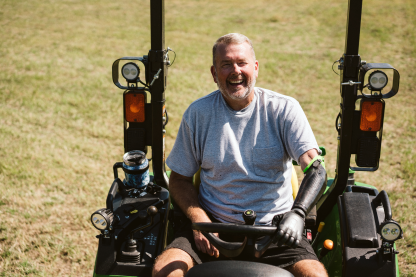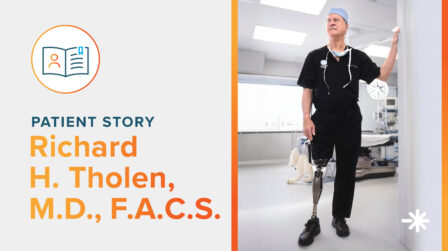The O&P Podcast | Starfish TMR Procedure for Partial Hand Amputees

The Starfish Targeted Muscle Reinnervation (TMR) procedure is a groundbreaking targeted muscle reinnervation surgery to help partial hand amputees regain individual digit control of a prosthetic device. In this O&P Podcast, Dr. Bryan Loeffler, MD, shares the development and success of the Starfish TMR procedure.
Significant advancements have been made in upper limb prosthetics in recent years. Yet, the goal of independent digital control has remained elusive, given the limitations of the human-to-prosthesis interface. Surface myoelectric signals must be detectable to power these prosthetics, and patients with partial or total hand amputations usually lack the requisite surface EMG signals. This is what led to the Starfish TMR procedure.
Development of Starfish TMR Procedure
Patients with partial hand amputations often still have innervated interosseous muscles. They are traditionally thought of as muscles that spread the fingers apart and together, but they also contract when a patient wants to open their hand. Their deep position in the palm of the hand, however, means that surface electrodes cannot detect signals generated by their contractions.
The thought was can we take those muscles that live deep within the palm between the metacarpal bones and release them from their native attachments, where they normally attach on the bone, and keep their nerve and blood supply but then move them up directly underneath the skin.
Then, one surface electrode would be placed directly over that muscle to capture the signal when the muscle contracts, setting up a patient for prosthetic use.
Doing that for each one of the fingers would enable a patient to just think “move my index finger” or “move my middle finger,” and each one of those muscle contractions would translate to a myoelectric digit doing a movement.
BReCON Upper Limb Conference
Learn more about advanced upper limb surgical procedures and complex prosthetic technologies at the Bionic Reconstruction Conference (BReCON): The Future of Integrated Upper Limb Surgical and Prosthetic Innovation.

Results
At OrthoCarolina, we have now had the opportunity to perform about 30 Starfish TMR procedures for patients who have lost two to four fingers at a level between the PIP joint and the midpoint of the hand and train other surgeons on the procedure. Robust palpable and detectable signals were detected immediately following surgery. Patients demonstrated the ability to naturally control each prosthetic finger in a highly intuitive manner even at the 2-week postoperative visit, and they have been shown to perform acts as delicate as picking a flower and as robust as lifting a 20-lb dumbbell.
From a timing perspective, we prefer to do the surgery as soon as possible, but it’s even worked well for patients who are years out from injury. We look at each person individually to assess what is best for them and tailor treatment to their needs and requirements. This is an exciting opportunity for patients.
Request a Free Evaluation
If you or someone you love is looking for personalized care following amputation, get in touch with a board-certified prosthetist at a Hanger Clinic near you.
Latest Updates
Subscribe to stay up-to-date on our latest posts.


